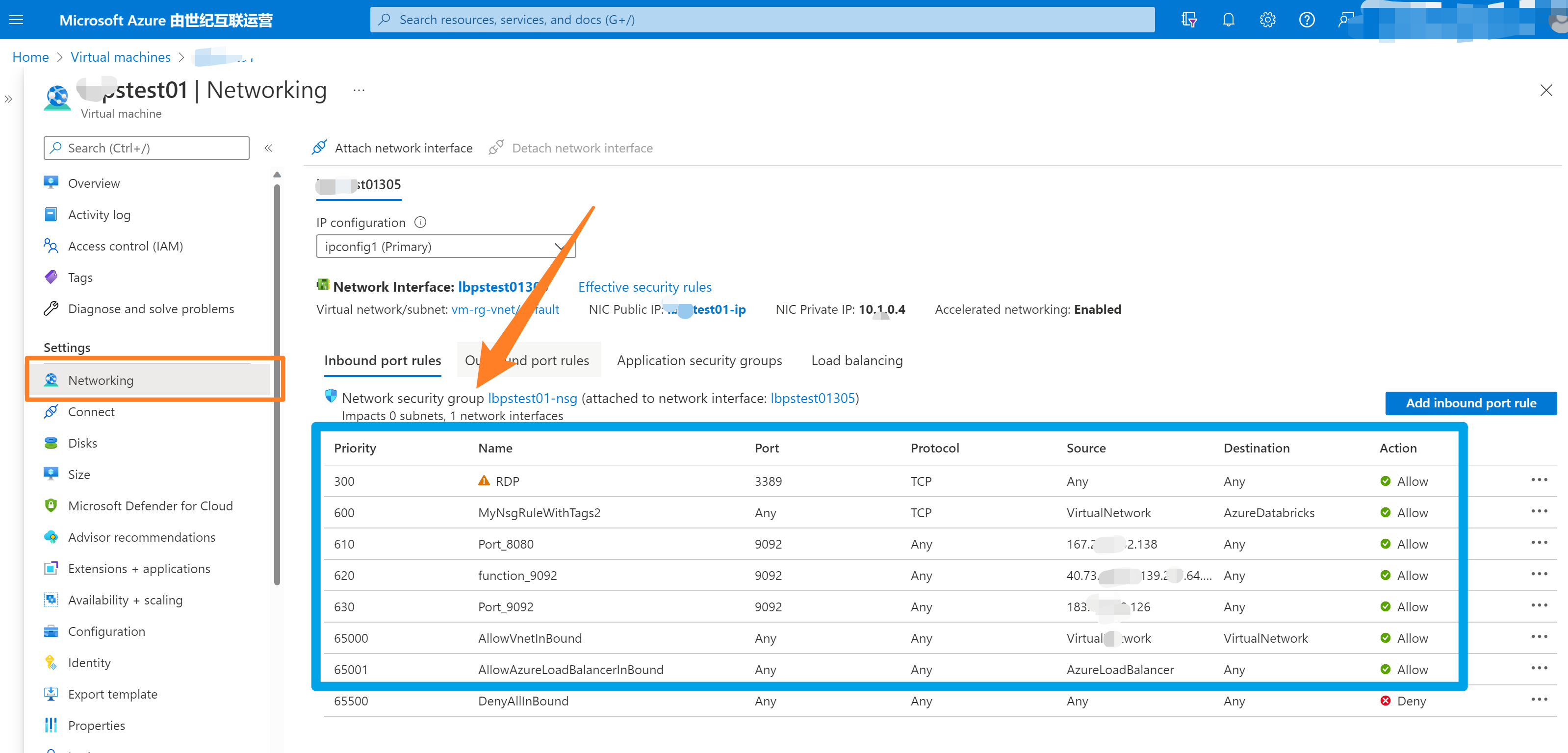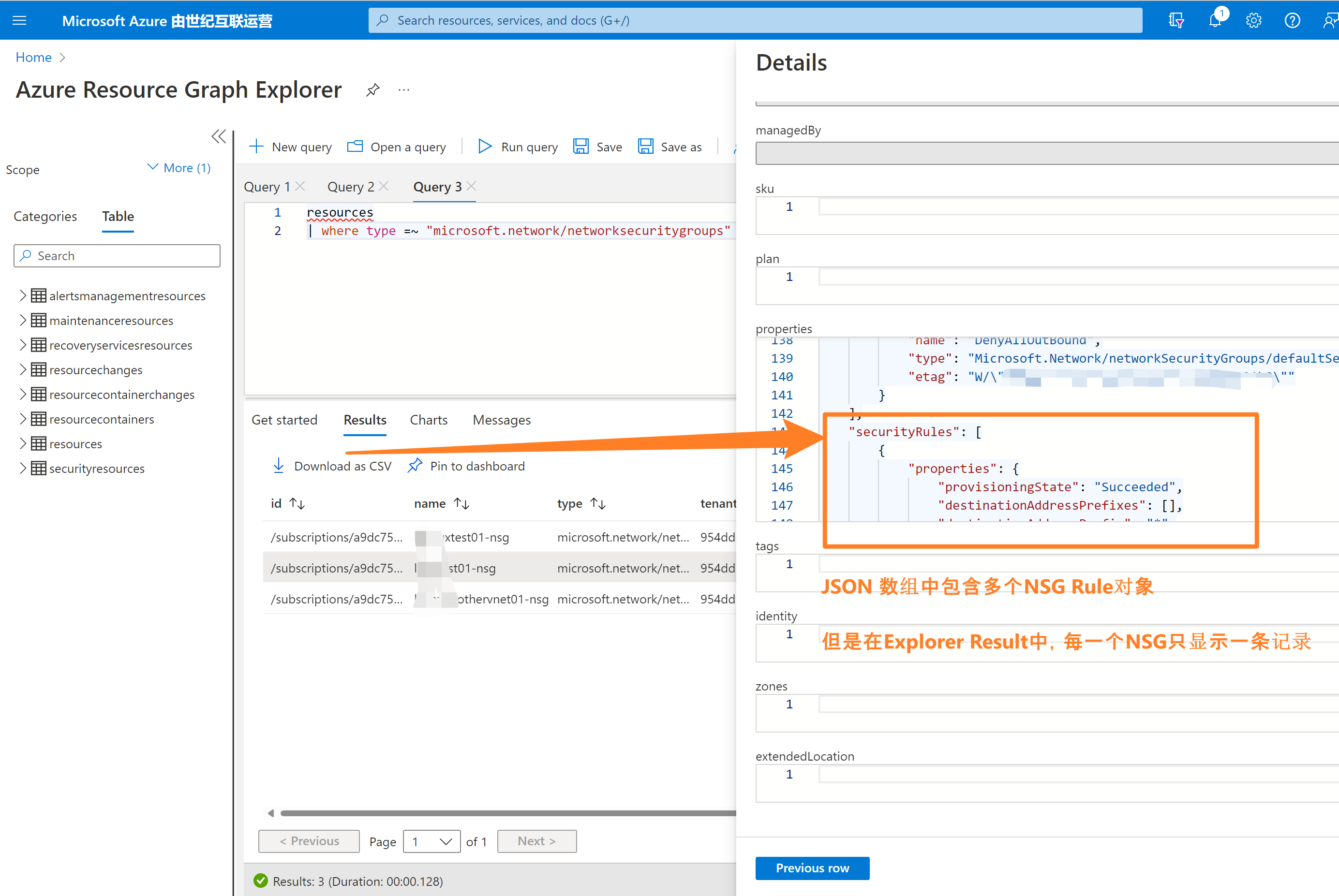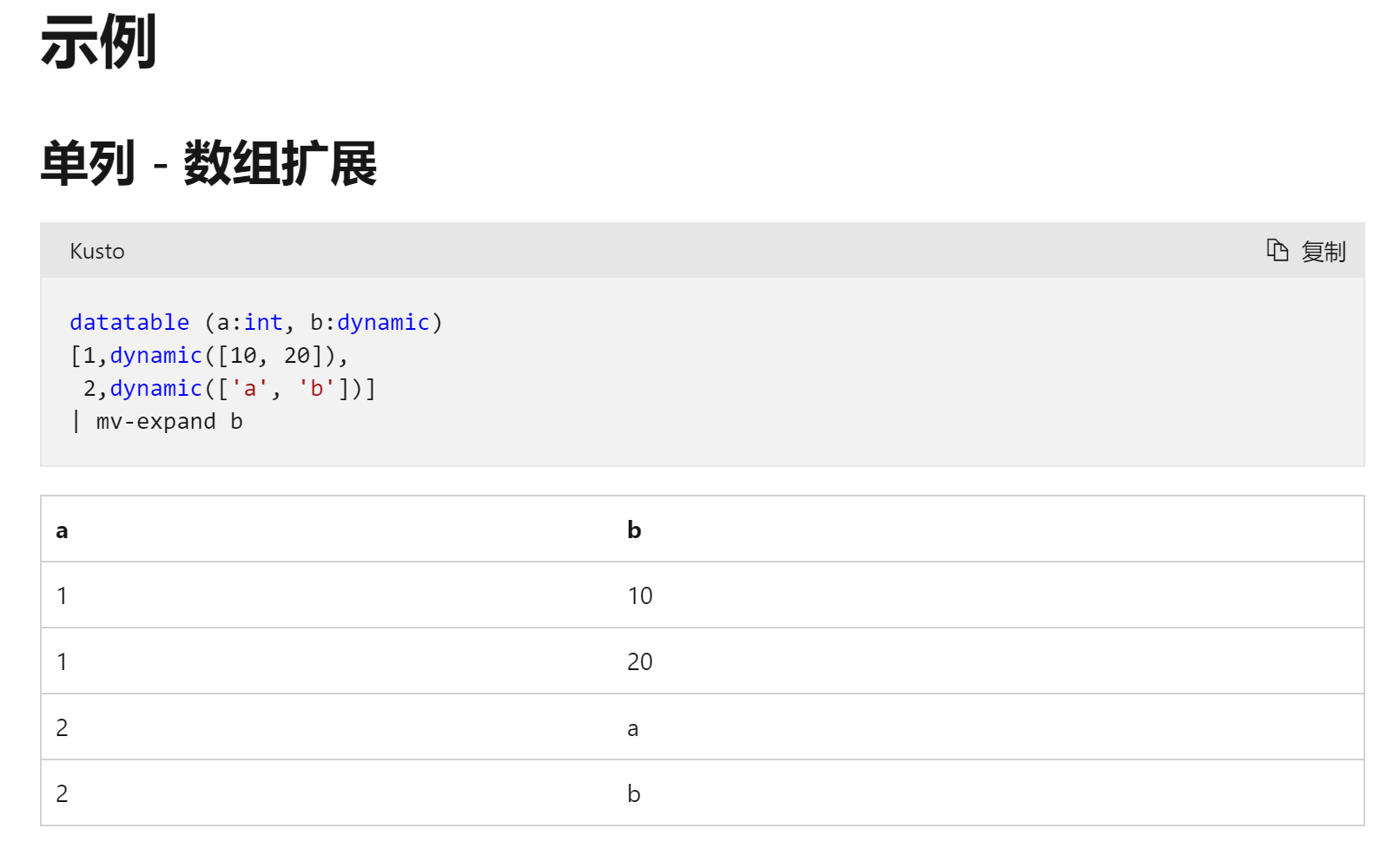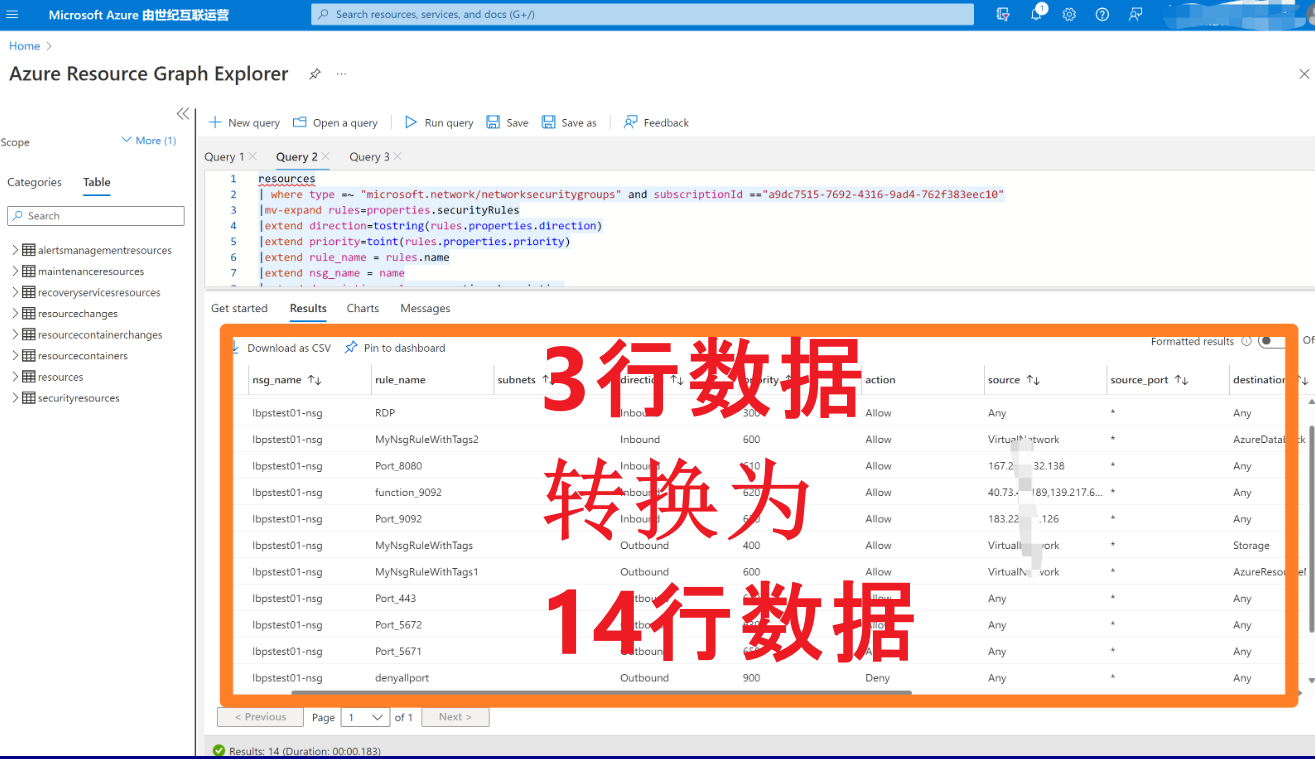【Azure 環境】Azure Resource Graph Explorer 中實現動態陣列資料轉換成多行記錄模式
問題描述
想對Azure中全部VM的NSG資源進行收集,如果只是檢視一個VM的NSG設定,可以在門戶頁面中檢視表格模式,但是如果想把匯出成表格,可以在Azure Resource Graph Explorer中查詢到資源,但是,它的格式是JSON陣列,在一行中顯示,那麼如何把一行資料中的陣列轉換成多行記錄(提高可讀性)呢?
VM NSG門戶顯示為表格模式:

Azure Resource Graph Explorer中顯示為JSON 陣列:

問題解答
在Azure Resource Graph Explorer 中,所使用的Kusto Query 語言中,有一個運運算元 : mv-expand (Expands multi-value dynamic arrays or property bags into multiple records.) , 它可以將多值動態陣列或屬性包擴充套件為多個記錄。
如把值
1, [10,20] 2, [a,b]
兩行資料轉換4行資料:
1, 10 1, 20 2, a 2, b
詳細的解說可以參考MV-EXPAND檔案(https://docs.microsoft.com/zh-cn/azure/data-explorer/kusto/query/mvexpandoperator#examples)。

迴歸到本文問題解答,是列舉出NSG Rule。
首先,通過Resource Graph Explorer獲取到全部的NSG資訊:
resources | where type =~ "microsoft.network/networksecuritygroups"
因為NSG Rules的結果是JSON陣列格式,所以需要對它進行轉換(MV-EXPAND)。然後,通過extend方式獲取到Properties中的屬性值:
resources | where type =~ "microsoft.network/networksecuritygroups" and subscriptionId =="a9dc7515-7692-4316-9ad4-762f383eec10" |mv-expand rules=properties.securityRules |extend direction=tostring(rules.properties.direction) |extend priority=toint(rules.properties.priority) |extend rule_name = rules.name |extend nsg_name = name |extend description=rules.properties.description |extend destination_prefix=iif(rules.properties.destinationAddressPrefixes=='[]', rules.properties.destinationAddressPrefix, strcat_array(rules.properties.destinationAddressPrefixes, ",")) |extend destination_asgs=iif(isempty(rules.properties.destinationApplicationSecurityGroups), '', strcat_array(parse_json(rules.properties.destinationApplicationSecurityGroups), ",")) |extend destination=iif(isempty(destination_asgs), destination_prefix, destination_asgs) |extend destination=iif(destination=='*', "Any", destination) |extend destination_port=iif(isempty(rules.properties.destinationPortRange), strcat_array(rules.properties.destinationPortRanges,","), rules.properties.destinationPortRange) |extend source_prefix=iif(rules.properties.sourceAddressPrefixes=='[]', rules.properties.sourceAddressPrefix, strcat_array(rules.properties.sourceAddressPrefixes, ",")) |extend source_asgs=iif(isempty(rules.properties.sourceApplicationSecurityGroups), "", strcat_array(parse_json(rules.properties.sourceApplicationSecurityGroups), ",")) |extend source=iif(isempty(source_asgs), source_prefix, tostring(source_asgs)) |extend source=iif(source=='*', 'Any', source) |extend source_port=iif(isempty(rules.properties.sourcePortRange), strcat_array(rules.properties.sourcePortRanges,","), rules.properties.sourcePortRange) |extend action=rules.properties.access |extend subnets = strcat_array(properties.subnets, ",") |project resourceGroup, nsg_name, rule_name, subnets, direction, priority, action, source, source_port, destination, destination_port, description, subscriptionId, id |sort by resourceGroup asc, nsg_name, direction asc, priority asc
獲取到的結果為:

######################################################################################################
附錄一 : NSG Rules 中 securityRules 的格式為:
"securityRules": [ { "properties": { "provisioningState": "Succeeded", "destinationAddressPrefixes": [], "destinationAddressPrefix": "VirtualNetwork", "sourceAddressPrefixes": [], "destinationPortRanges": [], "destinationPortRange": "*", "sourceAddressPrefix": "VirtualNetwork", "sourcePortRanges": [], "sourcePortRange": "*", "priority": 65000, "protocol": "*", "direction": "Inbound", "access": "Allow", "description": "Allow inbound traffic from all VMs in VNET" }, "id": 「「 }, … … { "properties": { "provisioningState": "Succeeded", "destinationAddressPrefixes": [], "destinationAddressPrefix": "*", "sourceAddressPrefixes": [], "destinationPortRanges": [], "destinationPortRange": "*", "sourceAddressPrefix": "*", "sourcePortRanges": [], "sourcePortRange": "*", "priority": 65500, "protocol": "*", "direction": "Outbound", "access": "Deny", "description": "Deny all outbound traffic" }, "id": "/「 } ]
參考資料
mv-expand 運運算元 : https://docs.microsoft.com/zh-cn/azure/data-explorer/kusto/query/mvexpandoperator
Azure Resource Graph Query For Network Security Group Rules : https://blog.tyang.org/2021/12/08/azure-resource-graph-query-for-nsg-rules
當在複雜的環境中面臨問題,格物之道需:濁而靜之徐清,安以動之徐生。 雲中,恰是如此!